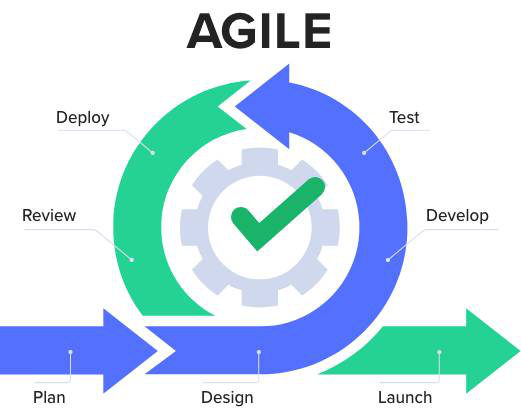Home » Agile Development » Page 2
Introduction Creating user stories that are clear, concise, and valuable is crucial for successful project development. In this guide, we'll explore the key elements of a good user story using the 3Cs (Card, Conversation, Confirmation) and INVEST (Independent, Negotiable, Valuable, Estimable, Small, Testable) principles. By the end of this guide, you'll have a step-by-step understanding of how to structure user stories that lead to effective and efficient development cycles. Crafting Effective User Stories with 3Cs and INVEST Let's create a user story for a task management app. User Story As a busy professional,…
continue reading →
Introduction In the dynamic world of agile software development, where collaboration and adaptability reign supreme, the ability to craft effective user stories is paramount. Enter Visual Paradigm, your go-to professional agile tool that takes user story creation to new heights, aligning seamlessly with the core principles of agile methodology. Mastering the 3C's: Card, Conversation, and Confirmation Visual Paradigm understands the essence of a good user story lies in the 3C's—Card, Conversation, and Confirmation. Our User Story tool empowers you to effortlessly adhere to these critical components, ensuring your user stories are not just…
continue reading →
Introduction In the dynamic world of Agile development, effective planning and prioritization are the cornerstones of success. Three crucial elements in this process are the Product Backlog, Sprint Planning Meetings, and Sprint Backlog. Let's explore how these components interconnect and when they come into play in the Agile development process. Product Backlog: The Starting Line The Agile journey begins with the Product Backlog, a dynamic and evolving list of features, enhancements, and fixes that constitute the project's roadmap. Owned by the Product Owner, the Product Backlog is a living document that captures the…
continue reading →
Introduction In the dynamic realm of Agile methodology, efficient project management is the key to success. Two crucial components that play a pivotal role in Agile development are the Product Backlog and Sprint Backlog. While they may sound similar, they serve distinct purposes in the Agile framework. Let's delve into the intricacies of Product Backlog vs Sprint Backlog to comprehend their significance in the Agile development process. Product Backlog The Product Backlog is the overarching repository that encapsulates all the features, enhancements, and bug fixes that need to be addressed in the product.…
continue reading →
Introduction Embarking on the journey of developing a new e-commerce website is an exciting but complex endeavor. In the realm of agile development, where adaptability and collaboration reign supreme, the process unfolds in a series of well-defined stages. Each stage, intricately linked, focuses on the heartbeat of the project—the user story. From the inception of the project to the continuous improvement cycles, our agile odyssey is a testament to flexibility, customer-centricity, and iterative progress. A User Story in Agile Development Process Let's dive into the agile development process! Imagine we're working on developing…
continue reading →
Introduction Ever felt lost in the maze of software development requirements? Fear not! Enter the superhero of Agile methodology—the User Story. Let's dive into the world of User Stories, those magical snippets that make software dreams come true. What's the Buzz About User Stories? Picture this: a sleek, natural language description capturing the essence of a software feature from the user's perspective. That's a User Story! Forget the heavy documentation; embrace the simplicity. Whether scribbled on index cards, Post-it notes, or stored in digital realms, these stories bridge the gap between developers and…
continue reading →
Introduction In the ever-evolving landscape of Agile development, choosing the right tools to capture and convey requirements is paramount. Among the contenders, Use Cases and User Stories stand out, each offering a unique perspective on system functionality. This exploration aims to dissect their roles, strengths, and ideal use scenarios, guiding Agile practitioners in crafting a symphony of development that resonates with end-users. Use Cases vs User Stories Let's delve into the world of Agile development, comparing the use cases and user stories to see which is the MVP (Most Valuable Player). Use Cases…
continue reading →
Introduction In the ever-evolving landscape of software development, the Agile methodology stands as a beacon of adaptability and collaboration. Meanwhile, Unified Modeling Language (UML) is often seen as a heavyweight relic of a bygone era. Can these seemingly disparate approaches find common ground? This article delves into the marriage of UML and Agile, exploring how visual modeling can enhance communication without compromising agility. UML in Agile UML and Agile may seem like an odd couple at first, but they can actually complement each other quite well. While Agile emphasizes flexibility, collaboration, and responding…
continue reading →
Introduction Agile development methodologies have transformed the way software projects are managed, emphasizing collaboration, flexibility, and customer-centricity. Two popular tools in the agile toolkit for defining requirements are Use Cases and User Stories. Both serve the purpose of capturing and communicating software requirements, but they have distinct characteristics and are suited for different scenarios. In this article, we will compare Use Cases and User Stories in terms of their advantages, limitations, and provide examples to help you determine which approach is better suited for your agile development project. Use Cases Use Cases are…
continue reading →
Introduction Agile project management has become the de facto standard for software development and has been embraced by many other industries for its adaptability and focus on customer value. Within the realm of Agile, Scrum is one of the most popular frameworks, but it's important to understand that Agile and Scrum are not synonymous. In this article, we'll explore the key differences between Agile and Scrum, providing a clear contrast through a table and examples. Agile: A Framework for Flexibility Agile is a philosophy or mindset that prioritizes flexibility, collaboration, and customer-centricity in…
continue reading →


